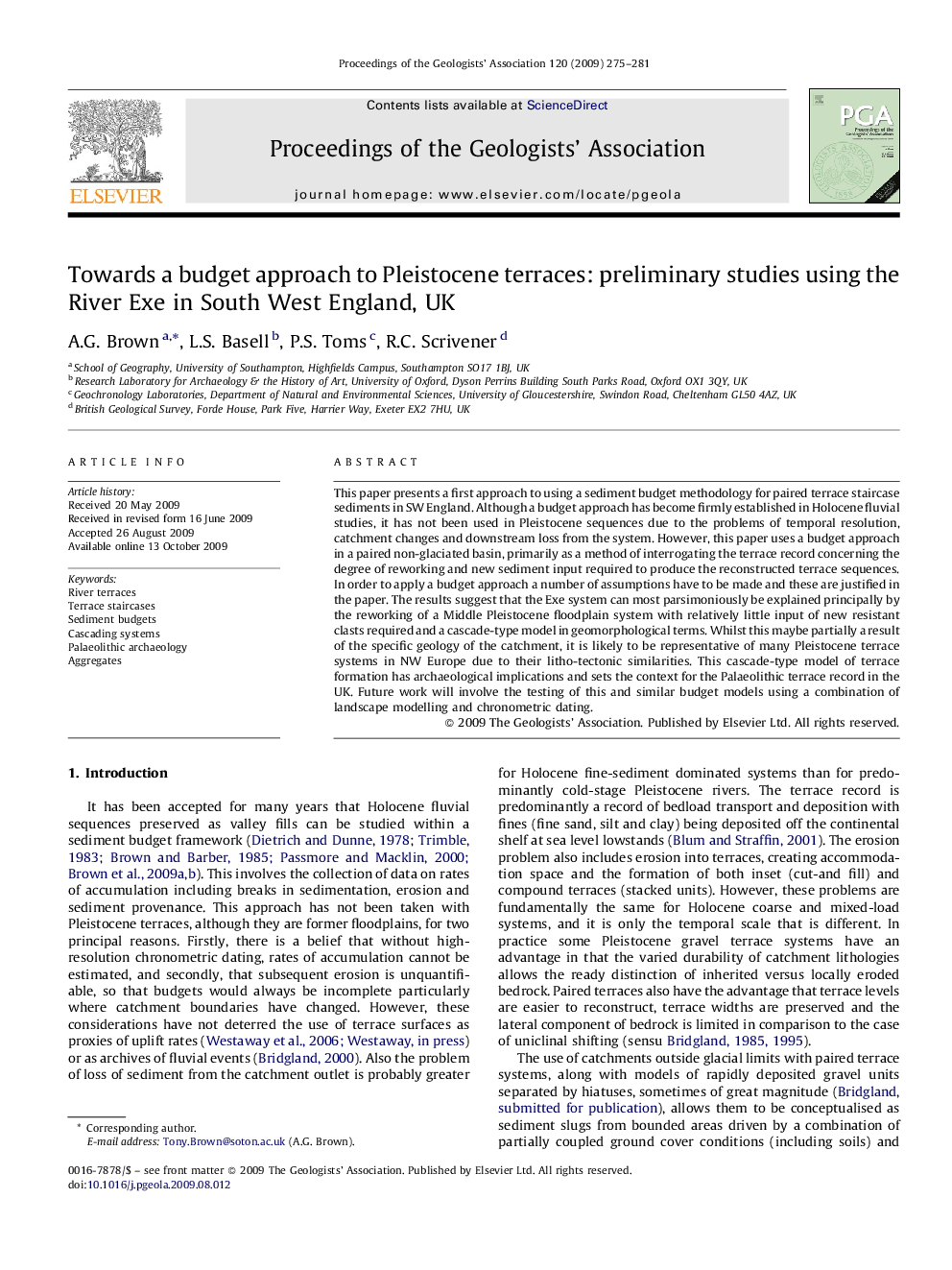| Article ID | Journal | Published Year | Pages | File Type |
|---|---|---|---|---|
| 4734902 | Proceedings of the Geologists' Association | 2009 | 7 Pages |
This paper presents a first approach to using a sediment budget methodology for paired terrace staircase sediments in SW England. Although a budget approach has become firmly established in Holocene fluvial studies, it has not been used in Pleistocene sequences due to the problems of temporal resolution, catchment changes and downstream loss from the system. However, this paper uses a budget approach in a paired non-glaciated basin, primarily as a method of interrogating the terrace record concerning the degree of reworking and new sediment input required to produce the reconstructed terrace sequences. In order to apply a budget approach a number of assumptions have to be made and these are justified in the paper. The results suggest that the Exe system can most parsimoniously be explained principally by the reworking of a Middle Pleistocene floodplain system with relatively little input of new resistant clasts required and a cascade-type model in geomorphological terms. Whilst this maybe partially a result of the specific geology of the catchment, it is likely to be representative of many Pleistocene terrace systems in NW Europe due to their litho-tectonic similarities. This cascade-type model of terrace formation has archaeological implications and sets the context for the Palaeolithic terrace record in the UK. Future work will involve the testing of this and similar budget models using a combination of landscape modelling and chronometric dating.
